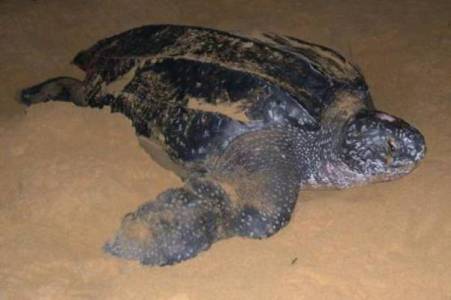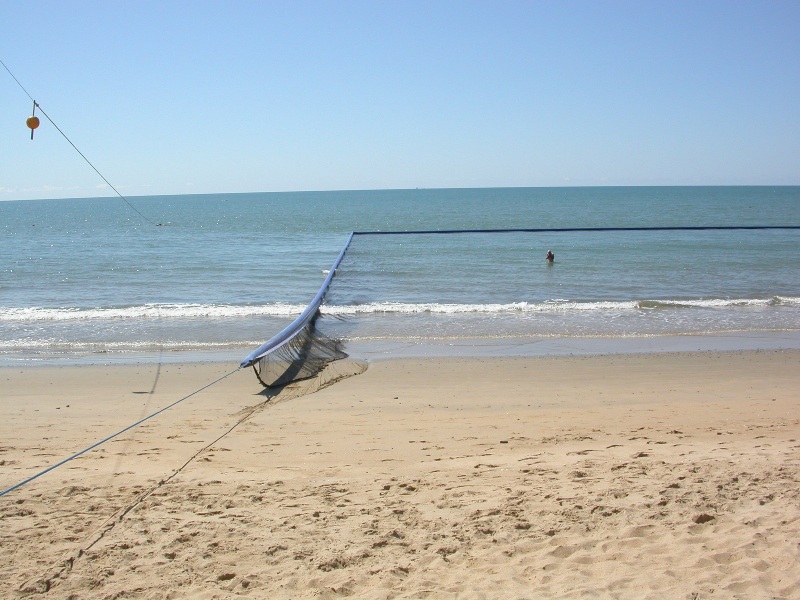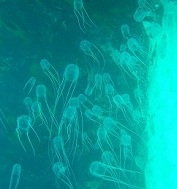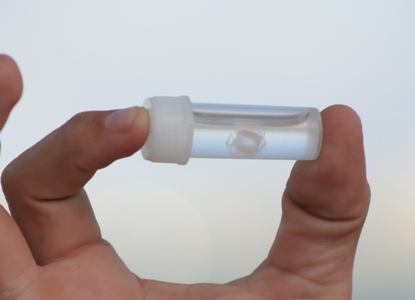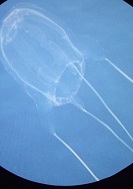Interactions
It appears that Carukia barnesi interacts mostly with its prey. As stated on the nutrition page, these jellyfish feed upon little invertebrate crustaceans, zooplankton (Hays 2009), and when matured, small vertebrate fish (Ruzi and Patel 2012). Currently, the only animals known to be capable of safely consuming jellyfish are ocean sunfish, certain sea turtles (like the leather back turtle below), and a few other fish species. Jeffrey Hays from Facts and Details explains that these animals “have pharyngeal ‘teeth’ at the back their throats. After swallowing a jellyfish they regurgitate it against these teeth, which strains out the water and leaves behind the edible material which is swallowed and digested.”
Wikimedia Commons: Edgard Dias Magalhães
Wikimedia Commons: Coalición Pro CEN
Here is a link to a video of a green sea turtle eating a jellyfish (however not an Irukandji jellyfish still really cool to see).
Public Beach with Jellyfish Nets
Wikimedia Commons: Colin Henein
Another interaction that has created a lot of excitement and worry is with humans! Us! The photograph above shows jellyfish nets which are very frequently used in hope to minimize, if not completely eliminate, the presence of jellyfish on public baches. These tiny jellies can have a major impact on us if we get in the way of their translucent bodies. (Did you notice how I said bodies, and not just tentacles? That’s because the Irukandji has stinging cells on their bell as well! Head on over to adaptation to learn more about that!) The deadly effect that C. barnesi can have on humans has been named “Irukandji Syndrome.” Click on the link to learn what happens to the body and even watch a video of two divers that have been stung!
Next stop: Interesting Facts
UW-L
Last Updated: April 26, 2013
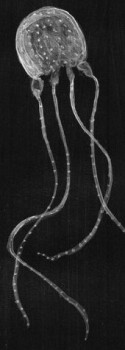
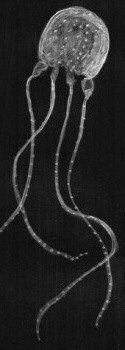
.JPG)
